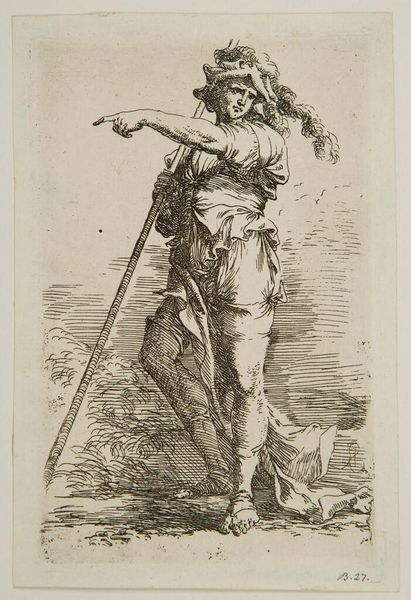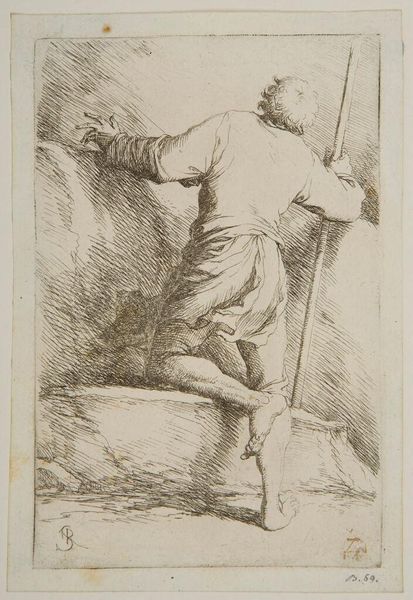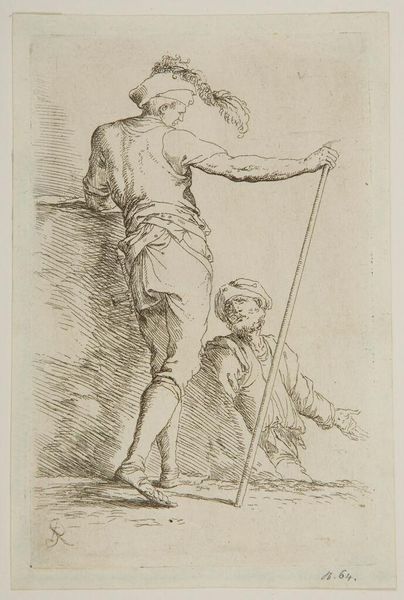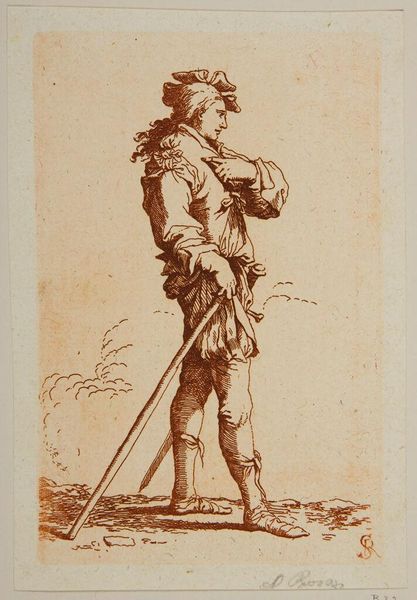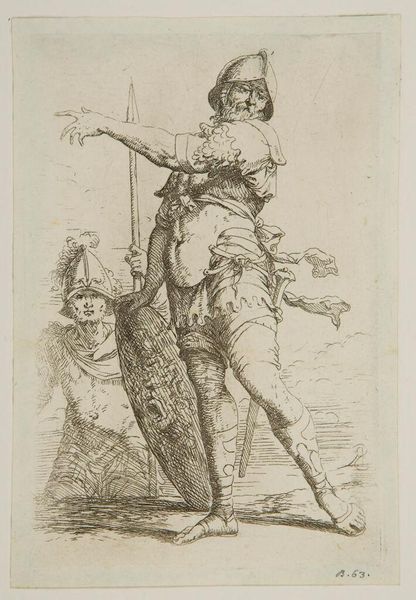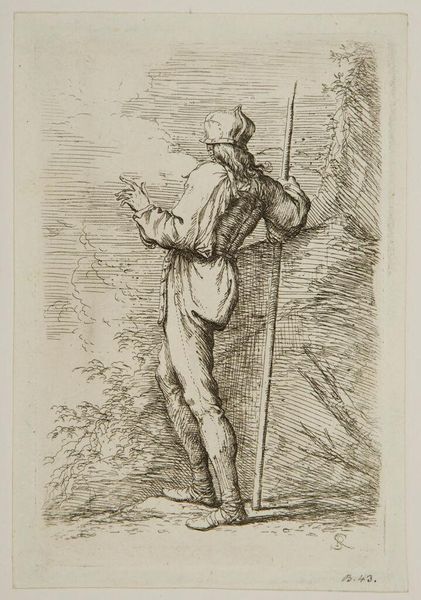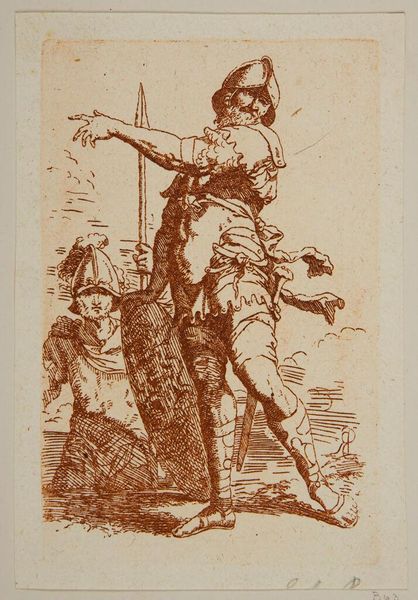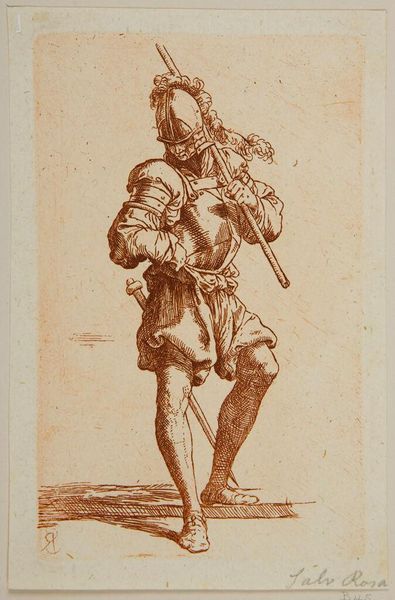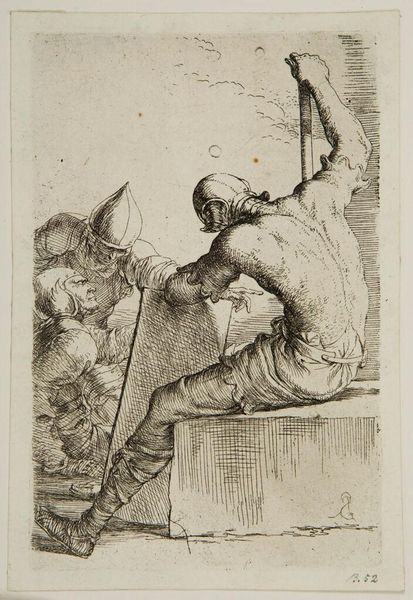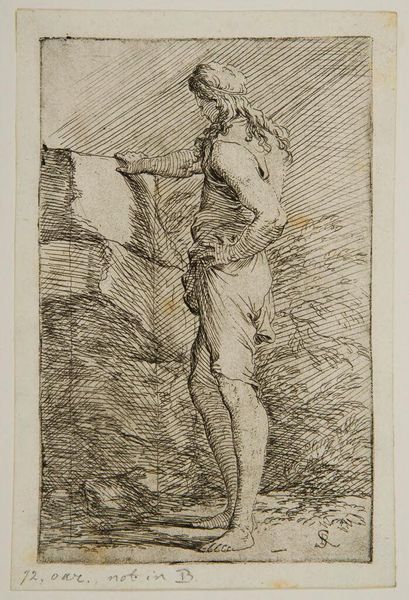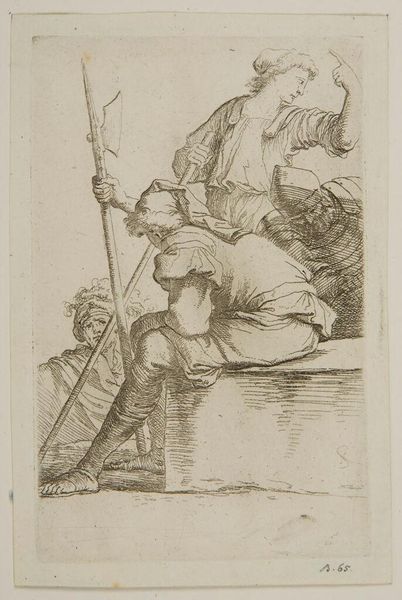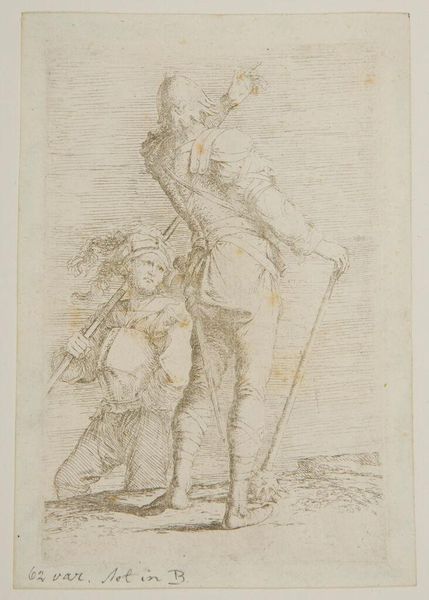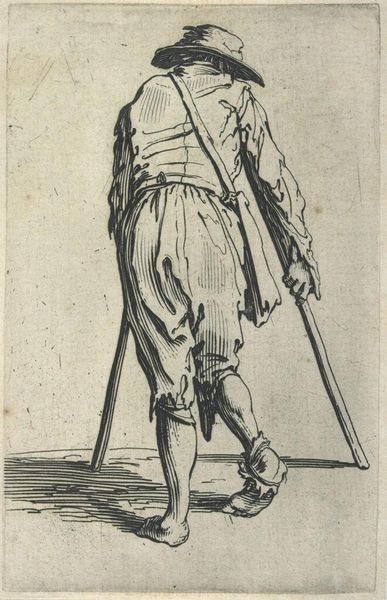
Copyright: CC0 1.0
Curator: Before us, we have Salvator Rosa's etching, "Copies after the Figurine." Editor: It's striking how the figure commands attention, even with the limited palette. The stark lines create a sense of raw energy. Curator: Indeed. Rosa, born in 1615, was deeply engaged with the materiality of printmaking. The etching process itself—the biting of the plate—allows for a directness and immediacy in translating his vision. Editor: That directness lends itself to the figure's powerful stance. The diagonal of the staff, the pointing arm—they create a compelling compositional tension. Curator: Consider the social context, too. Rosa challenged artistic norms by depicting brigands and soldiers. His embrace of these “low” subjects challenged the established hierarchy of artistic genres. Editor: While the subject matter is crucial, I can't help but focus on the figure. Curator: Yes, his defiance resonates. It's been a compelling conversation. Editor: Agreed. There's a lot to take in from Rosa's work.
Comments
No comments
Be the first to comment and join the conversation on the ultimate creative platform.
